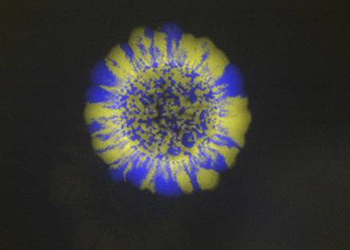A new mechanism for combatting multi-resistant bacteria

In an innovation study now published in the PLOS Biology journal, Isabel Gordo and her team at the IGC – the Gulbenkian Institute of Science identified a compensatory mechanism that fosters the growth of multi-resistant bacteria that may in the future serve as a new therapeutic tool to counter these bacteria.
Antibiotics are designed to attack the essential cellular functions of bacteria but these may also evolve and become resistant to these drugs through acquiring mutations in the genes involved in these functions. That brings a cost to the bacteria given how the majority of these mutations endowing resistance prove prejudicial in the absence of the antibiotics. In order to overcome this, the bacteria may acquire other compensatory mutations. Thus far, the process by which these compensatory mutations develop in multi-resistant bacteria was entirely unknown and hence the target that the team of Isabel Gordo set out to discover.
The researchers demonstrated that the pace of compensatory adaptation in multi-resistant strains of Escherichia coli (E. coli) is swifter than in strains that only carry one mutation. The team managed to identify the core proteins involved in the compensatory mechanisms of multi-resistant bacteria. Isabel Gordo explained this with a metaphor: “If we compare the bacteria to a car, we may say that many of the mutations that endow resistance to streptomycin affect the motor of the cell that drives the production of proteins (the ribosome) while the resistance to rifampicin emerges from the mutations in the accelerator of this motor (a protein called polymerase RNA). The team discovered that the compensatory mechanism for multi-resistant E. coli includes mutations in the ‘clutch’, thus the proteins that connect the cell’s ‘motor’ to its ‘accelerator’.” The IGC researcher added: “If we are able to block the now identified proteins, perhaps we will be able to kill multi-resistant bacteria as we would be eliminating this compensatory mechanism that favours growth in its population.”
These results emerge from analysis of E. coli strains with resistance only to rifampicin and streptomycin, and strains displaying resistance to both antibiotics grown in an antibiotic-free environment. The research team forecasts that the now discovered mechanism may be used in a general way with many other cases of multi-resistance to drugs given that the antibiotics affect the same cellular mechanisms. Thus, the proteins herein identified may prove good targets for the design of therapies against multi-resistant bacteria.
